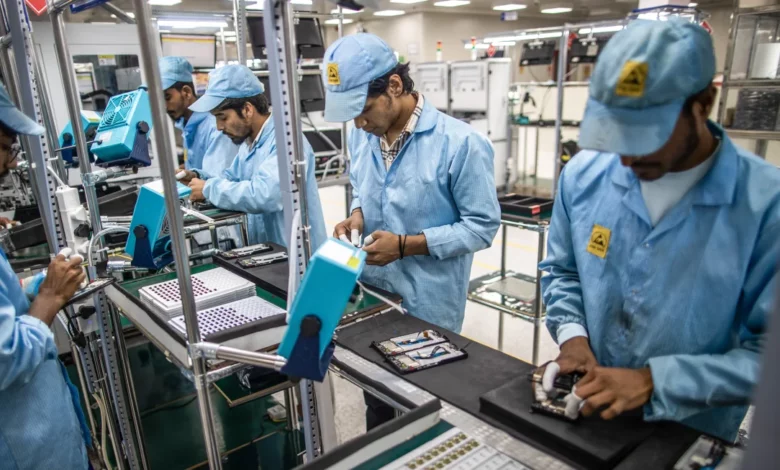
Gross domestic product (GDP) increased by 8.2 percent, according to the Statistics Ministry, cementing India’s status as the world’s fastest growing major economy. The rate of growth was higher than the Modi government’s forecast of 7.6 percent.
For the final quarter of the fiscal year, GDP expanded at a faster-than-expected rate of 7.8 percent, compared with the same period in 2023. GDP had risen by 8.6 percent in the October-December period.
“We expect economic activity to moderate a bit further over the coming quarters, but India will remain a global outperformer,” said Ankita Amajuri, assistant economist at Capital Economics.
There’s less than 24 hours to go before polls close in the election.
Modi is running on his economic record over the past 10 years, a period of robust growth for India. The country went from the ninth largest economy in the world to the fifth largest during that time. It also experienced the largest percentage growth in GDP over the decade compared to other major economies.
Results will be declared on June 4. If Modi wins a third term, “any deceleration (in the economy) will be mild,” added Amajuri.
Sustained expansion will push India higher up the ranks of the world’s biggest economies, with some observers forecasting the country to become number three behind only the US and China by 2027.
India is widely seen as an alternative to China for countries and companies looking to diversify their supply chains, particularly as the relationship between Washington and Beijing sours.
Some of the world’s biggest companies, including Apple (AAPL) supplier Foxconn, are already expanding their operations there.
“After China, India is the only economy that can achieve economies of scale, due to its large market,” wrote Nomura economists in a report earlier this week.
“India is one of the few economies that is garnering investor interest across a variety of sectors,” they added.
Despite the euphoria surrounding the growth figures, economists say there are enormous challenges facing the Indian economy in the next decade.
The new government will have to create hundreds of millions of jobs for a population that remains largely impoverished.
With an average age of 29 years, India’s population is one of the youngest globally, but the country is not yet able to reap the potential economic benefits from its youthful demographics.
According to a recent report by the International Labour Organization, educated Indians between the ages of 15 and 29 are more likely to be unemployed than those without any schooling, which reflects “a mismatch with their aspirations and available jobs.”
Youth unemployment rates in India are now higher than global levels, it said.
Analysts fear that if Modi’s party underperforms in the polls, it may put key land and labor reforms on the backburner.
But one of the biggest long-term threats facing the Indian economy is climate change. The country is particularly vulnerable to extreme heat and some places there are pushing the limits of human survivability, experts say.
Earlier this week, India’s capital territory of Delhi recorded its highest-ever temperature of 49.9 degrees Celsius (121.8 degrees Fahrenheit), and the oppressive heat wave forced authorities to impose water rationing.
Rising mercury levels in India risks reversing progress on poverty alleviation, health and economic growth, experts say.
The country is “expected to lose about 5.8 percent of daily working hours due to heat stress in 2030,” said a United Nations’ Economic and Social Commission for Asia and the Pacific (ESCAP) report in April.
“The problem is most severe for outdoor workers, particularly those employed in agriculture and construction, but also relevant for indoor factory workers,” it added.




